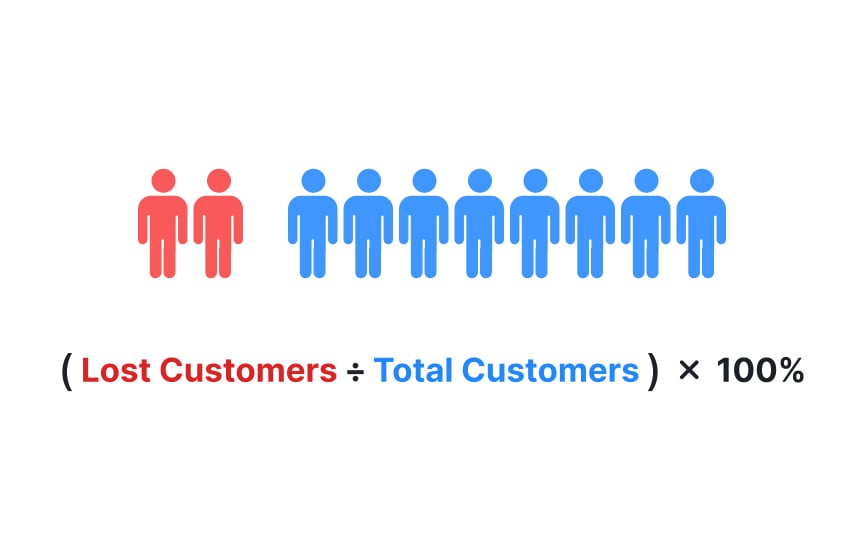Calculating and interpreting churn rate
The churn rate formula can be explained as the ratio of customers lost during a given period to the total number of customers at the start of that period. For example, if a company starts a month with 1,000 customers and loses 50 customers by the end, the churn rate is 5%.
However, it's not just about calculating the rate; you also need to understand it. A high churn rate can indicate problems like poor customer satisfaction, weak onboarding, or product issues, while a low churn rate reflects good customer retention and engagement.
Tracking churn rates over time is equally important. If your churn rate rises over several months, it could point to customer experience or product problems. A declining churn rate may show that improvements in service, product quality, or onboarding are working.

